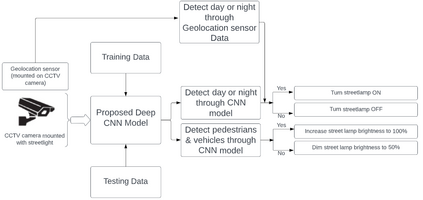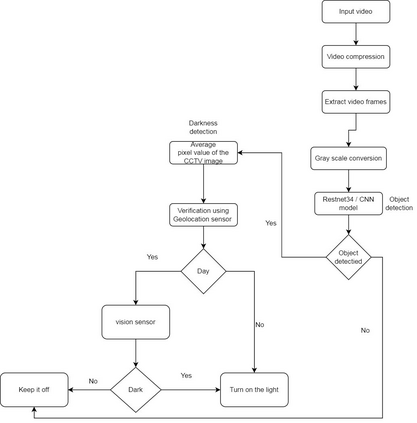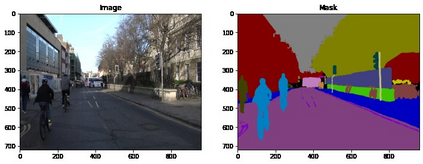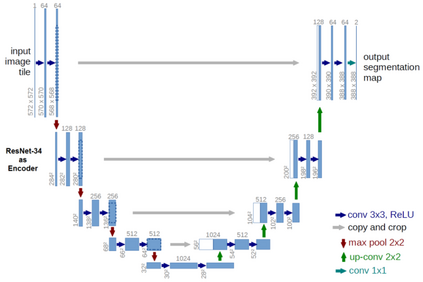One of the most neglected sources of energy loss is streetlights which generate too much light in areas where it is not required. Energy waste has enormous economic and environmental effects. In addition, due to the conventional manual nature of the operation, streetlights are frequently seen being turned ON during the day and OFF in the evening, which is regrettable even in the twenty-first century. These issues require automated streetlight control in order to be resolved. This study aims to develop a novel streetlight controlling method by combining a smart transport monitoring system powered by computer vision technology with a closed circuit television (CCTV) camera that allows the light-emitting diode (LED) streetlight to automatically light up with the appropriate brightness by detecting the presence of pedestrians or vehicles and dimming the streetlight in their absence using semantic image segmentation from the CCTV video streaming. Consequently, our model distinguishes daylight and nighttime, which made it feasible to automate the process of turning the streetlight 'ON' and 'OFF' to save energy consumption costs. According to the aforementioned approach, geolocation sensor data could be utilized to make more informed streetlight management decisions. To complete the tasks, we consider training the U-net model with ResNet-34 as its backbone. The validity of the models is guaranteed with the use of assessment matrices. The suggested concept is straightforward, economical, energy-efficient, long-lasting, and more resilient than conventional alternatives.
翻译:能源浪費中最常被忽略的來源之一是街燈,它們會在不需要照明的區域產生過多的光線。能源浪費對經濟和環境有著巨大的影響。此外,由於操作傳統而手動,街燈經常在白天被打開,在晚上關閉,即使在 21 世紀也很不幸。這些問題需要自動化的街燈控制來解決。本研究旨在開發一種新的街燈控制方法,將計算機視覺技術驅動的智能交通監控系統與封閉電路電視(CCTV)攝像頭相結合,使發光二極管(LED)街燈能夠通過檢測行人或車輛的存在並在其離開時調暗街燈來自動地以適當的亮度照明。因此,我們的模型能夠區分白天和晚上,進而實現自動化的開關街燈來節省能源成本。根據前述的方法,可以利用地理位置感應器數據來做出更明智的街燈管理決策。為了完成任務,我們考慮使用ResNet-34作為U-net模型的檢測模塊,使用測試指標確認模型的有效性。所提出的概念簡單、經濟、節能、耐用且比傳統的解決方案更強大。













